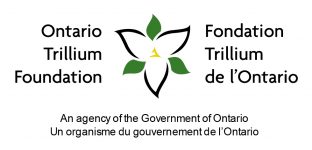Virtual Field Trips
The Education department at rare has created FREE virtual field trips for educators to use in the classroom. These self-guided field trips cover a number of different topics including birding, vermicomposting, winter animal adaptations, microplastics, benthic invertebrates and more! To see more information on each virtual field trip, please click the images below. Be sure to revisit this page for more virtual field trips in the future.
To gain access to rare’s virtual field trips, please fill out the form at the bottom of the page.
Backyard Birding
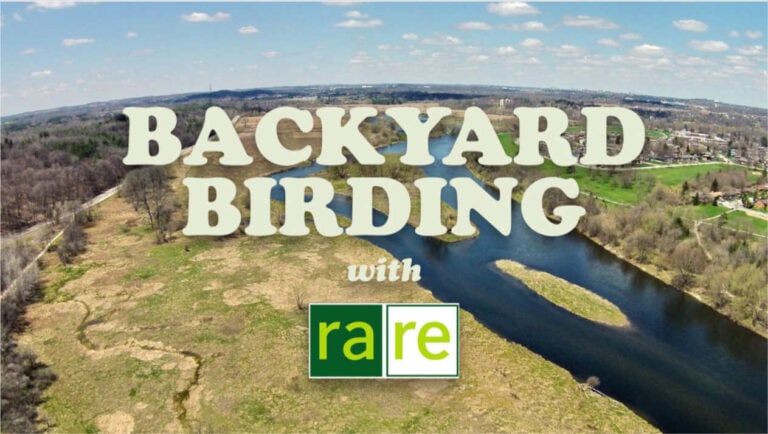
Exploring nature doesn’t mean we need to travel far away into the woods. Connect with the ‘near-nature’ and the local environment by learning to identify some common birds, then test out your new birding skills in the bird ID quiz and learn how to do some fun activities like making a birdfeeder at home!
This virtual field trip is appropriate for Primary students from Kindergarten – Grade 3 and is aligned with the Ontario Science curriculum in the following areas:
Kindergarten
As children progress through the Kindergarten program they:
- – 14. demonstrate an awareness of the natural and built environment through hands-on investigations, observations, questions, and representations of their findings
- – 28. demonstrate an awareness of their surroundings
- – 29. demonstrate an understanding of the natural world and the need to care for and respect the environment
Grade 1
Understanding Life Systems
Needs and Characteristics of Living Things
- – 1.1 identify personal action that they themselves can take to help maintain a healthy environment for living things, including humans
- – 2.2 investigate and compare the basic needs of humans and other living things, including the need for air, water, food, warmth, and space, using a variety of methods and resources
- – 2.3 investigate and compare the physical characteristics of a variety of plants and animals, including humans
- – 3.2 identify the physical characteristics (e.g., size, shape, colour, common parts) of a variety of plants and animals
- – 3.4 describe the characteristics of a healthy environment, including clean air and water and nutritious food, and explain why it is important for all living things to have a healthy environment
- – 3.5 describe how showing care and respect for all living things helps to maintain a healthy environment
- – 3.7 describe how the things plants and animals use to meet their needs are changed by their use and are returned to the environment in different forms
Grade 2
Understanding Life Systems
Growth and Changes in Animals
- – 1.2 identify positive and negative impacts that different kinds of human activity have on animals and where they live
- – 2.2 observe and compare the physical characteristics (e.g., fur or feathers; two legs or no legs) and the behavioural characteristics (e.g., predator or prey) of a variety of animals
- – 2.3 investigate the life cycle of a variety of animals
- – 2.4 observe and compare changes in the appearance and activity of animals as they go through a complete life cycle
- – 2.5 investigate the ways in which a variety of animals adapt to their environment and/or to changes in their environment, using various methods
- – 3.1 identify and describe major physical characteristics of different types of animals
- – 3.2 describe an adaptation as a characteristic body part, shape, or behaviour that helps a plant or animal survive in its environment
- – 3.3 identify ways in which animals are helpful to, and ways in which they meet the needs of, living things, including humans, to explain why humans should protect animals and the places where they live
The Wonderful World of Worms (Vermicomposting)
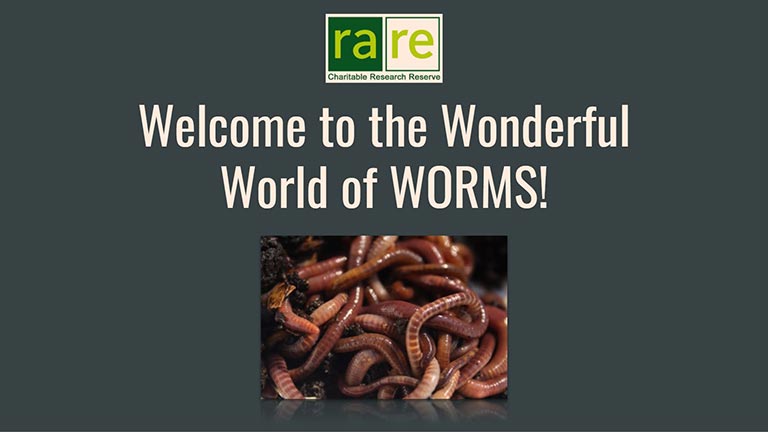
Dive beneath the soil surface and explore the wonderful world of worms! Learn about the role earthworms and other creatures play in the decomposition process and how they help to cycle nutrients back into the ecosystem. Then, learn how you can harness this amazing worm power to begin to compost your own organic and paper waste!
This field trip will give you and your students the information and resources needed to set up your own vermicomposters (small, portable worm bins to turn organic scraps into rich garden soil) at home or in the classroom, and as well show how we use this system at the Springbank Farm at rare to compost food waste from the Cambridge Self-Help Food Bank, and turn it into fresh soil to grow produce that then goes back to support food bank users!
This virtual field trip is designed for Grade 3 Students and is aligned with the Ontario Science curriculum in the following areas:
Grade 3
Understanding Earth and Space Systems
Soils in the Environment
- – 1.1 assess the impact of soils on society and the environment, and suggest ways in which humans can enhance positive effects and/or lessen or prevent harmful effects
- – 1.2 assess the impact of human action on soils, and suggest ways in which humans can affect soils positively and/or lessen or prevent harmful effects on soils
- – 2.4 investigate the process of composting, and explain some advantages and disadvantages of composting
- – 3.1 identify and describe the different types of soils
- – 3.2 identify additives that might be in soil but that cannot always be seen
- – 3.3 describe the interdependence between the living and non-living things that make up soil
- – 3.4 describe ways in which the components of various soils enable the soil to provide shelter/ homes and/or nutrients for different kinds of living things
Animals in Motion (Animal Lifecycles)
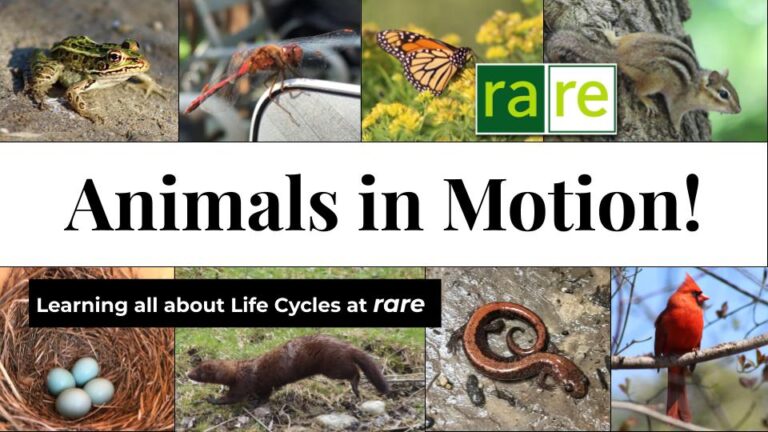
Learn about the lifecycles of butterflies, dragonflies, frogs, and birds in this virtual edition of our popular Animals in Motion module.
This virtual field trip is appropriate for Primary students in Kindergarten to Grade 2 and is aligned with the Ontario curriculum in the following areas:
Kindergarten
As children progress through the Kindergarten program they:
- 1. demonstrate an awareness of the natural and built environment through hands-on investigations, observations, questions, and representations of their findings
- 2. conduct simple investigations through free exploration, focussed exploration, and guided activity, using inquiry skills
- 3. demonstrate an understanding of the natural world and the need to care for and respect the environment;
Grade 1
Understanding Life Systems
Needs and Characteristics of Living Things
- 2. investigate needs and characteristics of plants and animals, including humans
- 3.demonstrate an understanding of the basic needs and characteristics of plants and animals, including humans
Grade 2
Understanding Life Systems
Growth and Changes in Animals
- 2. investigate similarities and differences in the characteristics of various animals
- 3. demonstrate an understanding that animals grow and change and have distinct characteristics
Understanding Earth and Space Systems
Air and Water in the Environment
- 3. demonstrate an understanding of the ways in which air and water are used by living things to help them meet their basic needs
Winter Animal Adaptations
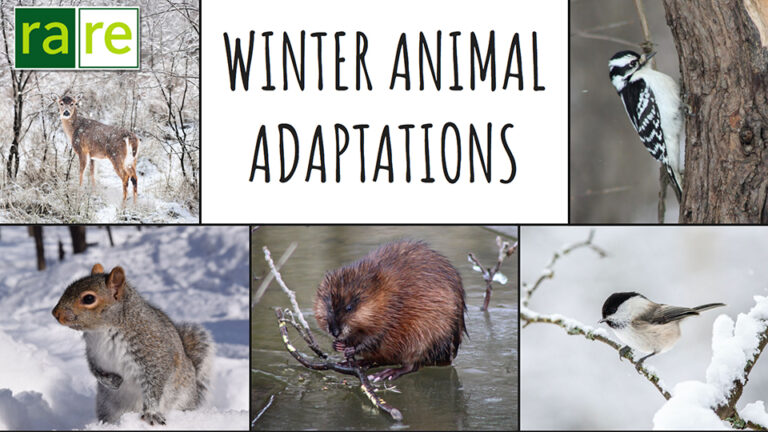
Learn about various adaptations that allow animals to survive during the winter. Through a series of interactive activities, explore different strategies that animals use including migration, insulation, hibernation, food caching, freezing, and camouflage.
This virtual field trip is appropriate for Primary students in Kindergarten to Grade 4 and is aligned with the Ontario curriculum in the following areas:
Kindergarten
As children progress through the Kindergarten program they:
- 4. demonstrate an ability to use problem-solving skills in a variety of contexts
- 14. demonstrate an awareness of the natural and built environment through hands-on investigations, observations, questions, and representations of their findings
- 29. demonstrate an understanding of the natural world and the need to care for and respect the environment
Grade 1
Understanding Life Systems
Needs and Characteristics of Living Things
- 2.2 investigate and compare the basic needs of humans and other living things, including the need for air, water, food, warmth, and space, using a variety of methods and resources
- 2.3 investigate and compare the physical characteristics of a variety of plants and animals, including humans
- 3.2 identify the physical characteristics (e.g., size, shape, colour, common parts) of a variety of plants and animals
Understanding Earth and Space Systems
Daily and Seasonal Changes
- 1.2 assess ways in which daily and seasonal changes have an impact on society and the environment
- 2.4 use scientific inquiry/research skills, including generating questions and knowledge acquired from previous investigations, to identify daily and/or seasonal changes and their effects
- 2.5 use appropriate science and technology vocabulary, including investigate, temperature, hibernate, dormant, energy, and survival, in oral and written communication
- 3.4 describe and compare the four seasons
- 3.5 describe changes in the appearance or behaviour of living things that are adaptations to seasonal changes
- 3.6 describe how humans prepare for and/or respond to daily and seasonal changes
Grade 2
Understanding Life Systems
Growth and Changes in Animals
- 1.2 identify positive and negative impacts that different kinds of human activity have on animals and where they live
- 2.2 observe and compare the physical characteristics (e.g., fur or feathers; two legs or no legs) and the behavioural characteristics (e.g., predator or prey) of a variety of animals, including insects, using student-generated questions and a variety of methods and resources
- 2.3 investigate the life cycle of a variety of animals using a variety of methods and resources
- 2.5 investigate the ways in which a variety of animals adapt to their environment and/or to changes in their environment, using various methods
- 2.7 use appropriate science and technology vocabulary, including life cycle, migration, adaptation, body coverings, and classify, in oral and written communication
- 3.1 identify and describe major physical characteristics of different types of animals
- 3.2 describe an adaptation as a characteristic body part, shape, or behaviour that helps a plant or animal survive in its environment
Understanding Earth and Space Systems
Air and Water in the Environment
- 3. demonstrate an understanding of the ways in which air and water are used by living things to help them meet their basic needs
Grade 4
Understanding Life Systems
Habitats and Communities
- 1.1 analyse the positive and negative impacts of human interactions with natural habitats and communities
- 2.5 use appropriate science and technology vocabulary, including habitat, population, community, adaptation, and food chain, in oral and written communication
- 3.3 identify factors (e.g., availability of water or food, amount of light, type of weather) that affect the ability of plants and animals to survive in a specific habitat
- 3.7 describe structural adaptations that allow plants and animals to survive in specific habitats
Benthic Invertebrate Sampling (Water Quality)
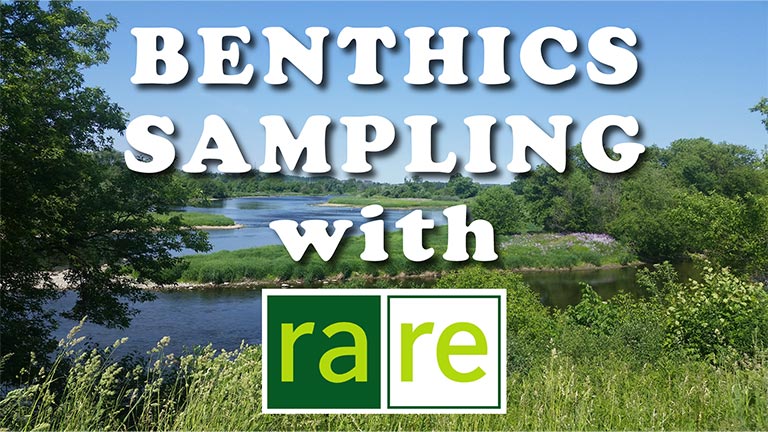
Learn how to identify benthic invertebrates in this virtual edition of our Mirrored Research Benthic Invertebrate Sampling module. Learn how samples are extracted with D-nets, sieved, prepared for identification, and how the final health rating of a sample site can be assessed.
This virtual field trip is appropriate for Secondary students and is aligned with the Ontario Science curriculum in the following areas:
SNC1W
- A1. demonstrate scientific investigation skills (related to both inquiry and research) in the four areas of skills (initiating and planning, performing and recording, analysing and interpreting, and communicating);
- – 1.1 formulate scientific questions about observed relationships, ideas, problems, and/or issues, make predictions, and/or formulate hypotheses to focus inquiries or research
- – 1.2 select appropriate instruments and materials, and identify appropriate methods, techniques, and procedures, for each inquiry
- – 1.5 conduct inquiries, controlling relevant variables, adapting or extending procedures as required, and using appropriate materials and equipment safely, accurately, and effectively, to collect observations and data
- – 1.6 compile accurate data from laboratory and other sources, and organize and record the data, using appropriate formats, including tables, flow charts, graphs, and/or diagrams
- – 1.8 synthesize, analyse, interpret, and evaluate qualitative data to determine whether the evidence supports or refutes the initial prediction or hypothesis and whether it is consistent with scientific theory; identify sources of bias and/or error; and suggest improvements to the inquiry to reduce the likelihood of error
- – 1.10 draw conclusions based on inquiry results and research findings, and justify their conclusions
- – 1.13 express the results of any calculations involving data accurately and precisely; to the appropriate number of decimal places or significant figures
- A2. Identify and describe careers related to the fields of science under study, and describe the contributions of scientists, including Canadians, to those fields.
- – 2.1 identify and describe a variety of careers related to the fields of science under study and the education and training necessary for these careers
SBI3U
A2. identify and describe careers related to the fields of science under study, and describe the contributions of scientists, including Canadians, to those fields
- – A2.1 identify and describe a variety of careers related to the fields of science under study and the education and training necessary for these careers
- – A2.1 identify and describe a variety of careers related to the fields of science under study and the education and training necessary for these careers
- B1. analyse the effects of various human activities on the diversity of living things
- – 1.2 analyse the impact that climate change might have on the diversity of living things
- – 1.2 analyse the impact that climate change might have on the diversity of living things
- B2. investigate, through laboratory and/or field activities or through simulations, the principles of scientific classification, using appropriate sampling and classification techniques
- – 2.3 use proper sampling techniques to collect various organisms from a marsh, pond, field, or other ecosystem, and classify the organisms according to the principles of taxonomy
SCH3U
- A2. identify and describe careers related to the fields of science under study, and describe the contributions of scientists, including Canadians, to those fields
- – A2.1 identify and describe a variety of careers related to the fields of science under study and the education and training necessary for these careers
- E1. analyse the origins and effects of water pollution, and a variety of economic, social, and environmental issues related to drinking water
- – E1.1 analyse the origins and cumulative effects of pollutants that enter our water systems (e.g., landfill leachates, agricultural run-off, industrial effluents, chemical spills), and explain how these pollutants affect water quality
- – E1.2 analyse economic, social, and environmental issues related to the distribution, purification, or use of drinking water
- – E2.8 conduct an investigation to determine the concentrations of pollutants in their local treated drinking water, and compare the results to commonly used guidelines and standards
All About Microplastics
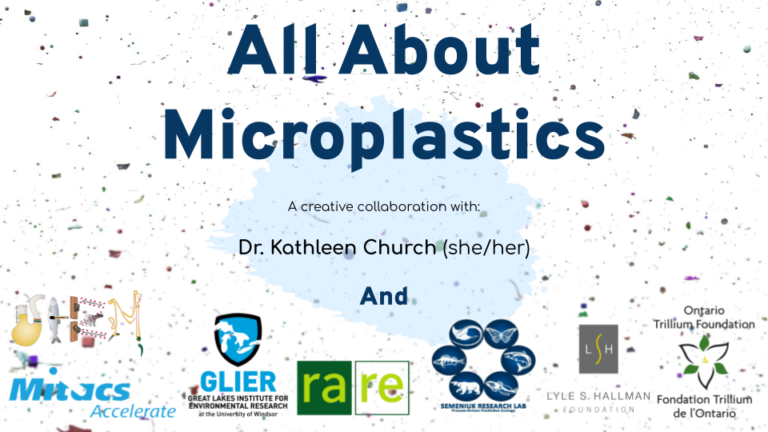
Learn about microplastics and the effect they have on aquatic animals from microplastic researcher Dr. Kathleen Church.
This virtual field trip is appropriate for Secondary students in grade 11 Biology and Chemistry and is aligned with the Ontario curriculum in the following areas:
- B1. analyse the effects of various human activities on the diversity of living things
- – 1.2 analyse the impact that climate change might have on the diversity of living things
- E1. analyse the origins and effects of water pollution, and a variety of economic, social, and environmental issues related to drinking water
- – E1.1 analyse the origins and cumulative effects of pollutants that enter our water systems (e.g., landfill leachates, agricultural run-off, industrial effluents, chemical spills), and explain how these pollutants affect water quality
- – E1.2 analyse economic, social, and environmental issues related to the distribution, purification, or use of drinking water
Invasive Plant Species
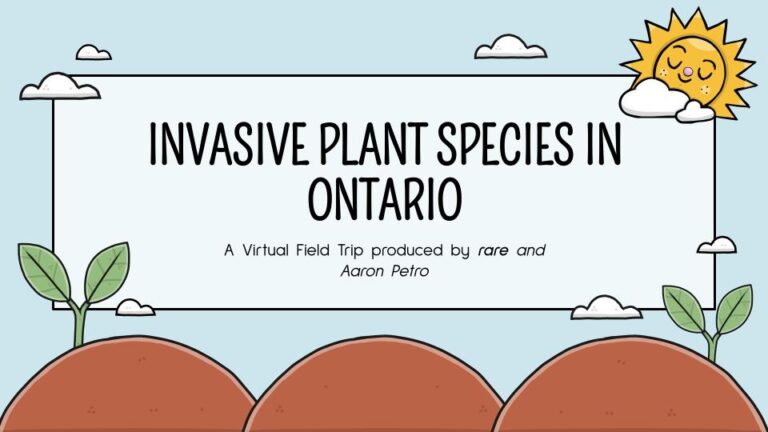
Learn about invasive plant species in Ontario, their effects on various ecosystems, and how some of these species are managed.
This virtual field trip is appropriate for Secondary students and is aligned with the Ontario curriculum in the following areas:
- B1. assess the impact of human activities on the sustainability of terrestrial and/or aquatic ecosystems, and evaluate the effectiveness of courses of action intended to remedy or mitigate negative impacts
- – 1.1 – assess, on the basis of research, the impact of a factor related to human activity (e.g., urban sprawl, introduction of invasive species,
overhunting/overfishing) that threatens the sustainability of a terrestrial or aquatic ecosystem [IP, PR, AI, C] - – 1.2 – evaluate the effectiveness of government initiatives in Canada (federal, provincial, municipal), and/or the efforts of societal groups or
non-governmental organizations, such as Aboriginal communities, environmental groups, or student organizations, with respect to an
environmental issue that affects the sustainability of terrestrial or aquatic ecosystems (e.g., wetland restoration, recycling programs, Canada–Ontario Environmental Farm Plans, stewardship of national and provincial parks) [AI, C]
- – 1.1 – assess, on the basis of research, the impact of a factor related to human activity (e.g., urban sprawl, introduction of invasive species,
- B3. demonstrate an understanding of major contemporary environmental challenges and how we
acquire knowledge about them- – 3.1 identify some major contemporary environmental challenges (e.g., global warming, acid precipitation), and explain their causes (e.g.,
deforestation, carbon and sulfur emissions)
and effects (e.g., desertification, the creation of
environmental refugees, the destruction of
aquatic and terrestrial habitats) - – 3.5 describe a variety of human activities that have
led to environmental problems (e.g., burning fossil
fuels for transportation or power generation;
waste disposal) and/or contributed to their solution (e.g., the development of renewable sources
of energy; programs to reduce, reuse, and recycle)
- – 3.1 identify some major contemporary environmental challenges (e.g., global warming, acid precipitation), and explain their causes (e.g.,
B1. analyse selected current environmental problems in terms of the role human activities have played in creating or perpetuating them, and propose possible solutions to one such problem
- – 1.1 propose possible solutions, on the basis of research, to a current practical environmental problem that is caused, directly or indirectly, by human activities
B3. demonstrate an understanding of some of the ways in which human activities affect the environment and how the impact of those activities is measured and monitored.
- – 3.5 explain the effects of human activity on an aquatic or terrestrial ecosystem (e.g., the impact of fertilizer run-off, acid precipitation, or an oil spill on an aquatic ecosystem)
- – 3.6 explain how human activities (e.g., agriculture, travel, the purchase of exotic pets, importing and exporting, releasing domesticated fish into fresh water environments, the use of live bait) have led to the introduction of invasive species, and why it is important to measure and monitor the impact of invasive species on native species
B2. Human Impacts: assess impacts of human population settlement on natural spaces and species
- – 2.4 describe ways in which non-native species can enter ecosystems, and evaluate the impact of an introduced or invasive species on an ecosystem (e.g., rabbits in Australia; predatory brown tree snakes on Guam; zebra mussels, purple loosestrife, and Asian long-horned beetles in Canada; giant rhubarb and grey squirrels in Ireland)
Tremendous Trees
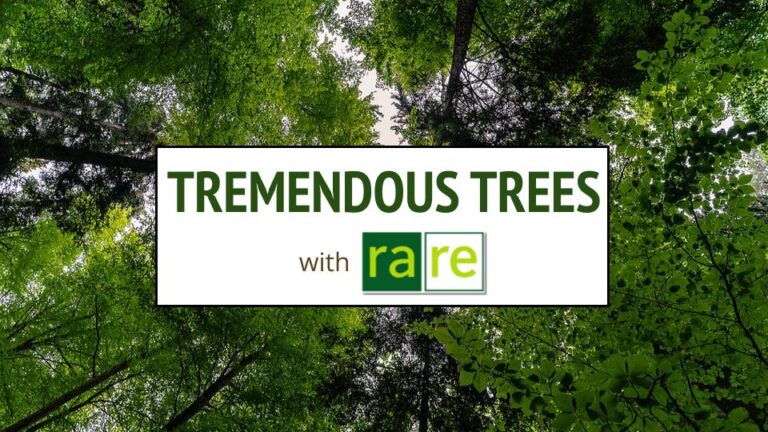
Learn all about trees by investigating the parts of a tree, the difference between coniferous and deciduous trees, and several tree species found at rare. Discover the many ways trees provide for people and wildlife.
This virtual field trip is appropriate for Primary students in Grade 1 and Grade 3 and is aligned with the Ontario curriculum in the following areas:
Understanding Life Systems
Needs and Characteristics of Living Things
1.1 identify personal action that they themselves can take to help maintain a healthy environment for living things, including humans
1.2 describe changes or problems that could result from the loss of some kinds of living things that are part of everyday life
2.2 investigate and compare the basic needs of humans and other living things, including the need for air, water, food, warmth, and space, using a variety of methods and resources
2.3 investigate and compare the physical characteristics of a variety of plants and animals, including humans
2.4 investigate the physical characteristics of plants (e.g., basic parts, size, shape, colour) and explain how they help the plant meet its basic needs
3.6 identify what living things provide for other living things
Understanding Life Systems
Growth and Changes in Plants
1.1 assess ways in which plants are important to humans and other living things, taking different points of view into consideration (e.g., the point of view of home builders, gardeners, nursery owners, vegetarians), and suggest ways in which humans can protect plants
1.2 assess the impact of different human activities on plants, and list personal actions they can engage in to minimize harmful effects and enhance good effects
2.2 observe and compare the parts of a variety of plants
3.1 describe the basic needs of plants, including air, water, light, warmth, and space
3.2 identify the major parts of plants, including root, stem, flower, stamen, pistil, leaf, seed, and fruit, and describe how each contributes to the plant’s survival within the plant’s environment
3.5 describe ways in which humans from various cultures, including Aboriginal people, use plants for food, shelter, medicine, and clothing (e.g., food – from rice plants; houses for shelter – from the wood of trees; medicines – from herbs; clothing – from cotton plants)
3.6 describe ways in which plants and animals depend on each other (e.g., plants provide food for energy; animals help disperse pollen and seeds, and provide manure that fertilizes the soil in which plants grow; plants need the carbon dioxide that animals breathe out, and animals need the oxygen that plants release into the air)
Renewable Energy
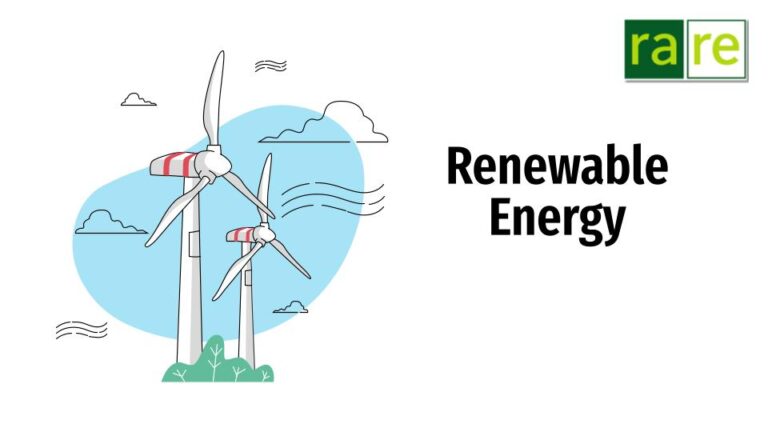
*** COMING SOON***
Learn all about how electricity is generated along with the renewable and non-renewable sources used to make it. Explore a sustainable home and living lab at rare and then generate electricity yourself by building a mini wind turbine.
This virtual field trip is appropriate for Secondary students in Grade 9 Science and is aligned with the Ontario curriculum in the following areas:
Physics
Principles and Applications of Electricity
D1.1 assess social, environmental, and economic benefits and challenges resulting from the production of electrical energy from various sources
D1.2 evaluate how electrical energy production and consumption impact various communities locally or globally, and describe ways to achieve sustainable practices
D1.3 develop a plan of action to address a local or global electrical energy production or consumption issue, including strategies for energy conservation
D1.4 analyse social, environmental, and economic impacts of emerging technologies related to electrical energy production, consumption, storage, and conservation
D2.5 apply a mathematical model to calculate electric current, potential difference, and resistance in real-world situations
D2.3 identify the components of a direct current (DC) circuit and explain their functions, and identify electrical quantities, their symbols, and their corresponding International System of Units (SI) units
Request Access
Funded By:
These curriculum-linked virtual field trips are provided free of charge and would not have been possible without the generous support of the Lyle S. Hallman Foundation and the Ontario Trillium Foundation.


